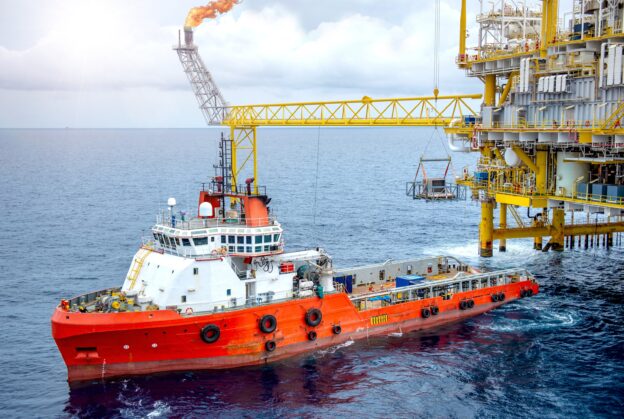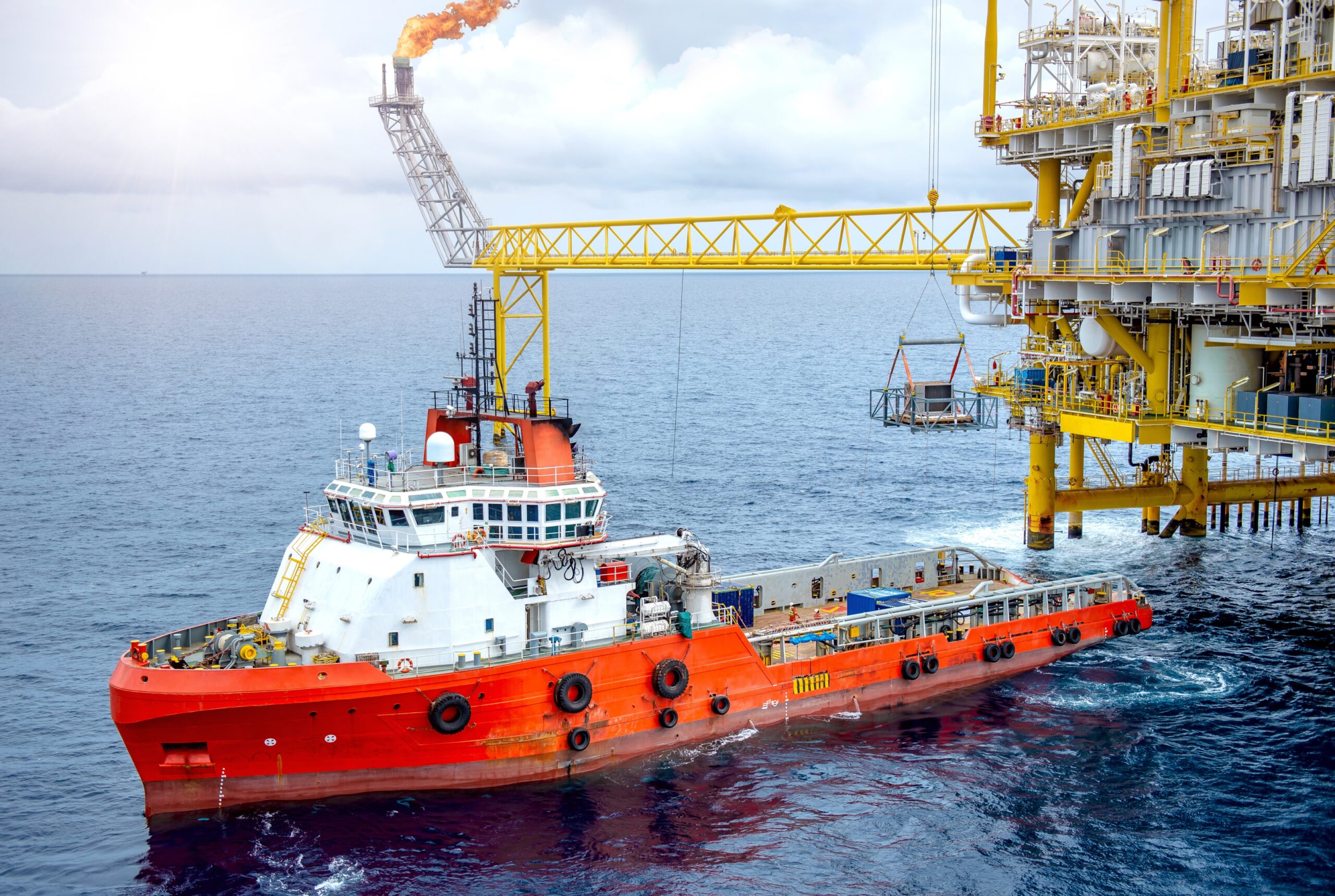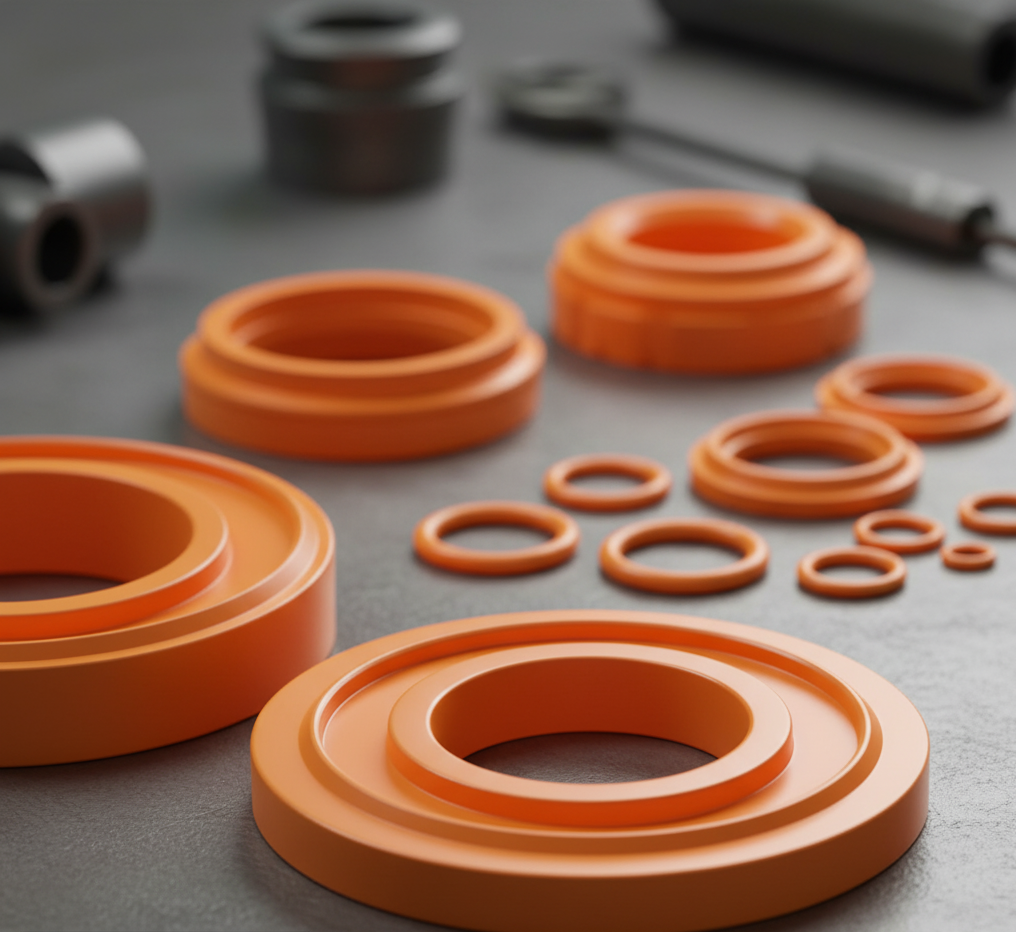Marine environments are among the most demanding settings for equipment and structural components. Constant exposure to saltwater, UV radiation, and fluctuating temperatures can rapidly degrade conventional materials, leading to costly repairs and downtime. Custom polyurethane solutions are engineered to withstand these harsh conditions, offering exceptional saltwater resistance, mechanical durability, and long-term performance.
In this article, we explore how tailored polyurethane formulations provide marine equipment and structures with unmatched longevity, protect against corrosion, and deliver reliable performance in the toughest saltwater environments.
At Uniflex, Inc., we specialize in designing and formulating polyurethane materials that stand up to the harshest saltwater environments, providing exceptional durability, corrosion resistance, and long-term reliability. Whether you need protection for structural components, machinery, or specialized marine equipment, our team works closely with you to deliver tailored solutions engineered for performance and longevity. Contact Uniflex, Inc. today at 248-486-6000 to explore how our custom polyurethane products can safeguard your assets and maximize operational efficiency in any marine environment.
👉Also Read: The Engineer’s Guide to Exploring High-Performance Castable Urethane Elastomers
The Importance of Polyurethane in Marine Applications
Polyurethane’s exceptional resistance to UV radiation, saltwater, and corrosion makes it a critical material in marine environments, consistently outperforming traditional alternatives. It is particularly effective in applications such as sealing assemblies that protect marine electronics from moisture and corrosion, as well as in components for dockside equipment.
Marine conditions demand materials that can endure extreme stresses. Polyurethane’s combination of high tensile strength and flexibility provides distinct advantages over rubber and metals, ensuring that components retain their structural integrity and performance even under the harshest conditions. This durability makes polyurethane an ideal choice for a wide range of marine applications.
Furthermore, polyurethane’s versatility—from fenders and bumpers to custom-molded parts—allows it to be engineered to meet specific requirements, enhancing functionality and significantly extending the service life of marine equipment. This adaptability not only improves performance but also makes polyurethane a cost-effective solution for maritime operations.
Saltwater Resistance: Why Polyurethane Excels
One of polyurethane’s most valuable properties is its exceptional resistance to saltwater. Unlike traditional materials that degrade rapidly in marine environments, polyurethane remains durable and functional over long periods. Its unique chemical structure allows it to withstand the corrosive effects of saltwater, protecting components from premature failure.
Polyurethane also has a very low moisture absorption rate, which prevents swelling, warping, or breakdown. This ensures that components maintain their shape and performance even with continuous water exposure. In addition, polyurethane is environmentally friendly in marine applications, as it does not alter water chemistry or release harmful microplastics. Its resistance to mold and biological growth further enhances long-term reliability.
Key benefits of polyurethane in saltwater environments include:
- Superior resistance to UV rays and chemical exposure, helping preserve the structural integrity of marine equipment
- Effective use in protective coatings for steel structures as well as in custom parts
- Longer component lifespan, reducing the need for frequent maintenance or replacements
👉Also Read: Molded Urethane: 10 Facts and 5 Myths Every Manufacturer Should Know
Longevity and Durability in Harsh Conditions
Polyurethane’s resilience and impact resistance make it an essential material for marine environments. It effectively withstands the combined effects of saltwater, UV exposure, mechanical stress, and abrasion, resulting in reduced maintenance costs and fewer replacements when compared to traditional materials.
Its unique balance of flexibility and toughness allows polyurethane to endure constant movement and repeated impact, conditions that often cause other materials to crack, corrode, or fail. By maintaining its integrity under these stresses, polyurethane delivers reliable, long-term performance.
With a proven record of innovation and consistent quality, polyurethane continues to stand out as an ideal choice for marine applications. Resistant to impact, wear, and environmental degradation, it performs dependably even in the harshest conditions. This combination of durability and cost-effectiveness makes polyurethane a practical and forward-looking investment for marine operations.
Specialized Marine Applications of Polyurethane
Polyurethane’s versatility is demonstrated by its wide range of marine applications, from dockside equipment such as fenders and bumpers to precision-engineered custom molded parts. Its adaptability makes it an essential material in the marine industry, consistently exceeding performance expectations in cast urethane production and specialized components.
The following subsections highlight specific applications, showing how polyurethane enhances durability, functionality, and longevity in demanding marine environments.
Dockside and Structural Protection
Polyurethane is widely used in dockside and structural applications, providing critical protection for both vessels and infrastructure. Fenders, bumpers, dockside pads, and pile guards made from polyurethane absorb impact from boats and ships, preventing damage to piers, pilings, and the vessels themselves. Protective polyurethane coatings are also applied to steel and concrete structures to resist corrosion, UV degradation, and abrasion. By extending the service life of these components, polyurethane reduces maintenance costs and ensures safe, reliable dockside operations.
Equipment and Handling Systems
In marine equipment and handling systems, polyurethane components play a vital role in improving performance and durability. Rollers, wheels, winch linings, and conveyor parts benefit from polyurethane’s low friction, high load-bearing capacity, and resistance to wear. These properties minimize damage to ropes, cables, and machinery, ensuring smooth and efficient operations in shipyards, docks, and marine logistics facilities. Unlike rubber or metal, polyurethane maintains its shape and performance under repeated stress, high impact, and continuous movement, making it a reliable choice for critical marine handling equipment.
Seals, Gaskets, and Protective Coatings
Seals, gaskets, and coatings made from polyurethane protect marine systems from moisture, corrosion, and environmental damage. These components are essential for safeguarding marine electronics, hydraulic systems, and mechanical equipment, preventing water ingress and ensuring long-term operational reliability. Polyurethane seals and coatings resist chemical degradation, UV exposure, and saltwater corrosion, maintaining equipment performance even in the most challenging marine conditions. Their durability reduces the need for frequent replacements and helps prevent costly downtime.
Custom Molded Components
Custom-molded polyurethane parts provide tailored solutions for specialized marine applications. This includes vibration-damping bushings, engine mounts, shock absorbers, and complex precision components designed for specific operational needs. Polyurethane can be engineered across a wide durometer range, offering varying degrees of hardness, flexibility, and resilience. Its shock absorption and noise-damping properties make it ideal for vibration-prone equipment, while tailored formulations ensure extended service life and reduced maintenance. Collaborating with experienced urethane products suppliers during design and prototyping ensures these parts meet stringent marine performance standards.
Offshore and Subsea Applications
Polyurethane is also widely used in offshore and subsea environments. Protective coatings, cable sheaths, pipeline linings, and buoyancy devices benefit from its chemical resistance and durability. These applications often involve extreme pressures, saltwater exposure, and mechanical stress, conditions under which polyurethane maintains its structural integrity. Its resistance to biofouling and environmental degradation further ensures long-term operational reliability, making it a preferred material for underwater systems and offshore platforms.
👉Also Read: Is Polyurethane Toxic to Skin? What You Need to Know
Comparing Polyurethane to Rubber and Metals
Polyurethane provides a range of advantages over rubber and metals, making it the preferred choice for numerous marine applications. Its combination of light weight, durability, and performance sets it apart from traditional materials.
- Lighter Weight: Polyurethane is significantly lighter than metals such as steel and aluminum. This weight advantage improves operational efficiency and overall performance while simplifying handling, installation, and maintenance of marine components. Lighter components also reduce strain on equipment and structures, contributing to longer-term reliability.
- Cost-Effectiveness: Polyurethane’s longer lifespan reduces the need for frequent replacements, lowering total lifecycle and maintenance costs. Compared to rubber and metals, which may require regular repairs or replacement due to wear, corrosion, or cracking, polyurethane offers a more economical solution for long-term marine operations.
- Superior Wear Resistance: In harsh marine conditions, polyurethane outperforms rubber and metals. Rubber can crack or degrade under prolonged exposure to saltwater, UV rays, and mechanical stress, while metals are prone to corrosion and structural fatigue. Polyurethane maintains its integrity, resisting wear and retaining functionality over extended periods.
- Enhanced Product Performance: Polyurethane combines toughness with flexibility, allowing it to absorb impacts and withstand mechanical stresses that would damage rubber or metal components. This resilience ensures consistent performance under demanding conditions, from dockside equipment to offshore systems.
- Longevity in Marine Environments: The chemical stability and resilience of polyurethane make it ideal for long-term use in marine settings. It preserves structural integrity, withstands environmental degradation, and resists damage from chemicals, saltwater, and UV exposure. This durability ensures that components continue to perform reliably, providing peace of mind for operators and reducing downtime.
Design Considerations for Marine Polyurethane Solutions
Designing polyurethane components for marine applications requires careful attention to environmental factors, mechanical demands, and material properties to ensure long-term performance and reliability. Marine environments are particularly challenging, exposing components to saltwater, UV radiation, fluctuating temperatures, mechanical stress, and chemical exposure. Selecting the appropriate polyurethane formulation and component design is essential for achieving durability and functional efficiency.
Durometer Selection
- Soft Formulations: Provide excellent shock absorption and vibration damping, ideal for bushings, fenders, and mounts.
- Hard Formulations: Offer superior load-bearing capacity and abrasion resistance, perfect for rollers, wheels, and structural coatings.
- Importance: Matching durometer to specific load and stress requirements optimizes both performance and longevity, ensuring components function reliably under heavy use.
Chemical and Environmental Resistance
- Saltwater & Chemical Exposure: Polyurethane must resist degradation from saltwater, oil, fuels, and cleaning chemicals.
- UV Stability: Components exposed to sunlight require UV-resistant grades to prevent discoloration, surface cracking, or loss of mechanical integrity.
- Benefit: Properly selected additives for UV protection and chemical resistance maintain component performance over extended service life.
Component Geometry and Tolerances
- Precision Molding: Ensures uniform thickness, optimal stress distribution, and proper fit with other equipment.
- Design Details: Rounded edges, fillets, and reinforcements in high-stress areas prevent premature failure and improve operational efficiency.
- Significance: Thoughtful geometry maximizes the durability and reliability of marine polyurethane components.
Maintenance and Lifecycle Considerations
- Serviceability: Components should allow easy inspection, replacement, or servicing without compromising operational uptime.
- Cost Efficiency: Proper design and material selection reduce long-term maintenance costs.
- Safety and Reliability: Well-designed polyurethane components enhance operational safety while maintaining consistent performance in demanding environments.
By carefully addressing durometer selection, chemical resistance, component geometry, supplier collaboration, and maintenance considerations, marine polyurethane solutions achieve optimal durability, long-term performance, and cost-effectiveness in some of the harshest environments on earth.
👉Also Read: Advantages of Urethane Coated Bearings in High-Performance Applications
Why Partnering with a Trusted Supplier Like Uniflex, Inc. is Essential for Marine Polyurethane Solutions
Partnering with an experienced supplier like Uniflex, Inc. is critical for developing high-performance polyurethane solutions specifically designed for demanding marine environments. A trusted supplier brings extensive industry knowledge, technical expertise, and years of practical experience, enabling them to recommend the most suitable polyurethane formulations and components for unique marine challenges. This collaboration ensures that custom polyurethane solutions are not only functional but also durable, resilient, and optimized for the harsh conditions of saltwater exposure, UV radiation, and mechanical stress.
Working with a reliable supplier like Uniflex, Inc. provides access to a comprehensive suite of services, including prototype development, material testing, and performance validation. These services help engineers and project teams verify that components meet precise specifications and perform reliably in real-world marine applications. By integrating supplier expertise early in the design and production process, companies can reduce the risk of component failure, minimize costly redesigns, and accelerate project timelines.
A trusted supplier also ensures strict adherence to industry standards and quality control protocols, providing consistent material properties, precision molding, and rigorous testing. This commitment to outstanding quality safeguards the integrity and reliability of marine equipment, improving operational efficiency and reducing long-term maintenance costs.
Partner with Uniflex, Inc. for Marine Polyurethane Solutions
Ensure your marine equipment and structures withstand the toughest conditions with custom polyurethane solutions from Uniflex, Inc. Designed for saltwater resistance, durability, and long-term performance, these components help reduce maintenance costs and improve operational reliability.
Why choose Uniflex, Inc.:
- Custom Products: Tailored durometers and chemical resistance for specific marine applications
- Prototype & Testing Support: Validate performance before full-scale production
- Precision Manufacturing: Consistent quality, exact tolerances, and reliable material properties
- Long-Term Durability: Components resist corrosion, UV, abrasion, and mechanical stress
- Expert Collaboration: Guidance on design, geometry, and stress optimization for peak performance
Partner with Uniflex, Inc. to implement marine polyurethane solutions that deliver unmatched longevity, reliability, and cost-effectiveness.
Frequently Asked Questions
What size range can be manufactured for custom polyurethane marine parts?
Our manufacturing capabilities range from small seals and bushings weighing ounces to large fenders and structural components exceeding 200 pounds. Component dimensions can range from under 1 inch to over 6 feet in length. Size limitations depend on molding method—compression molding accommodates larger parts, while injection molding offers tighter tolerances for smaller components. If you have a large or small application, contact us to discuss feasibility.
Is polyurethane environmentally safe for marine ecosystems?
Yes. Marine-grade polyurethane is chemically inert and doesn’t leach plasticizers, heavy metals, or other contaminants into water. Unlike some rubbers and antifouling coatings, it doesn’t release toxic substances that harm marine life. Polyurethane doesn’t contribute to microplastic pollution through degradation, as it maintains structural integrity rather than breaking down into particles. Many formulations meet international environmental standards for marine use.
Are custom colors available for polyurethane marine components?
Yes. While performance considerations drive material selection, polyurethane can be pigmented to match corporate colors, improve visibility (safety yellow, orange), or meet aesthetic requirements. Color doesn’t affect mechanical properties but may influence UV resistance—we incorporate UV stabilizers as needed. Keep in mind that colored components may show wear or fading more obviously than standard colors, though performance remains unaffected.




